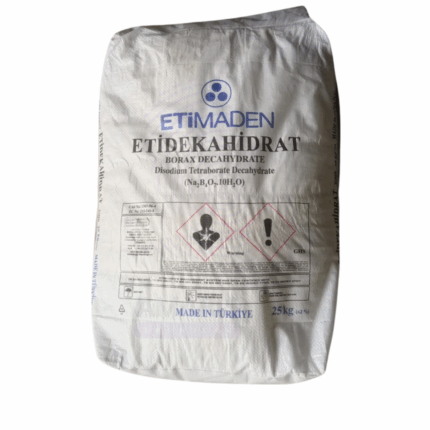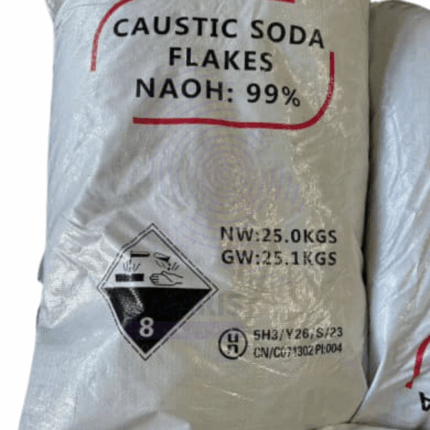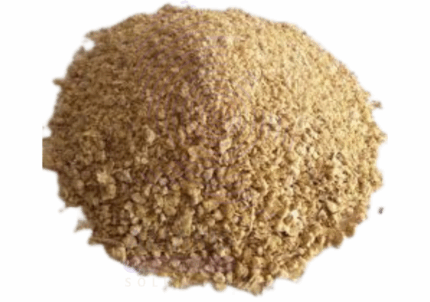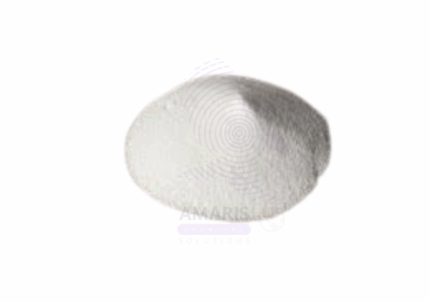
Ferric Chloride Anhydrous
$ 1.15 Original price was: $ 1.15.$ 1.02Current price is: $ 1.02.
Basic Laundry Detergent
Whatsapp Order
Basic Laundry Detergent is a cleaning agent formulated primarily for washing textiles such as clothes, linens, and other fabrics. It typically contains surfactants, builders, enzymes, and other additives that work synergistically to remove dirt, stains, and odors from fabrics. Designed for household and industrial use, laundry detergents help restore fabric cleanliness and freshness while maintaining fiber integrity. Basic laundry detergents can be in powder, liquid, or tablet form, and are formulated to perform in various water hardness conditions and temperatures.
Description
Table of Contents
Toggle
Basic Laundry Detergent
Primary Uses
- Household Laundry Cleaning
- Removes soil, grease, and stains from cotton, synthetic, and blended fabrics.
- Provides fabric softening and fresh fragrance.
- Compatible with washing machines and hand washing.
- Industrial & Commercial Laundry
- Used in laundromats, hotels, hospitals, and other large-scale laundry operations.
- Formulated for heavy-duty cleaning of uniforms, linens, and workwear.
- Stain Removal
- Contains enzymes and surfactants targeting protein-based, starch, and oil stains.
- Helps in pre-treating tough stains for better cleaning efficiency.
Secondary Uses
- Cleaning other washable textiles like curtains and upholstery fabrics.
- May be used in specialty cleaning formulations for specific fabrics or colors.
- In some cases, used for cleaning certain hard surfaces, e.g., washable walls or floors (depending on formulation).
KEY PRODUCT FEATURES
1. Basic Identification Attributes
- Chemical Name (IUPAC): Variable depending on formulation; typically a mixture of surfactants and additives
- Common/Trade Names: Basic Laundry Detergent, Powder Detergent, Liquid Detergent
- CAS Number: Mixture (varies by ingredients)
- HS Code: 3402.20.00
- Molecular Formula: Mixture; no fixed formula
- Synonyms: Laundry soap, fabric cleaner, washing powder
2. Physical & Chemical Properties
- Physical State: Powder, liquid, or tablet
- Color & Odor: Usually white/off-white powder or clear to colored liquid; fragrance added
- pH Level: Typically alkaline (pH 9–11 in solution)
- Solubility: Soluble in water
- Density: Varies (powders ~0.5–0.8 g/cm³; liquids ~1.0 g/cm³)
- Stability: Stable under normal storage conditions
3. Safety & Hazard Attributes
- Hazard Class (GHS): May cause eye irritation, skin irritation; generally non-flammable
- NFPA Ratings: Health 1, Flammability 0, Reactivity 0
- Exposure Limits: No specific limits; avoid dust or prolonged skin contact
- Reactivity: Stable; avoid mixing with strong acids or oxidizers
4. Storage & Handling Attributes
- Storage Conditions: Store in cool, dry place away from moisture and direct sunlight
- Container Type: Sealed plastic bags, boxes, or bottles
- Shelf Life: Typically 1–3 years depending on formulation and storage
- Special Handling: Avoid dust generation; use gloves if sensitive skin
5. Regulatory & Compliance Attributes
- Regulatory Status: Compliant with detergent regulations in respective countries (e.g., FDA, EPA, REACH)
- Transportation: Non-hazardous for transportation under most regulations
- Waste Disposal: Dispose in accordance with local environmental regulations; avoid release to waterways
6. Environmental & Health Impact
- Ecotoxicity: Biodegradable surfactants minimize environmental harm; however, excess phosphate-containing detergents can cause eutrophication
- Persistence: Surfactants typically biodegradable, but some additives may persist
- Carcinogenicity/Mutagenicity: No evidence of carcinogenic effects at typical exposure levels
- Biodegradability: Most formulations designed to be readily biodegradable
SAFETY HANDLING PRECAUTIONS
Safety Handling Precautions
- PPE: Wear gloves and eye protection if handling large quantities or powders to prevent skin and eye irritation.
- Handling: Avoid inhalation of powder dust; use in well-ventilated areas.
- Storage: Keep containers tightly closed, dry, and out of reach of children.
- Hygiene: Wash hands after use; avoid contact with eyes and prolonged skin exposure.
First Aid Measures
- Inhalation: Move to fresh air; seek medical attention if irritation or difficulty breathing occurs.
- Skin Contact: Wash with plenty of soap and water; seek medical advice if irritation persists.
- Eye Contact: Rinse thoroughly with water for at least 15 minutes; consult a physician if irritation continues.
- Ingestion: Do not induce vomiting; rinse mouth and seek medical advice immediately.
Firefighting Measures
- Fire Hazards: Non-flammable.
- Extinguishing Media: Use water spray, foam, dry chemical, or CO₂ if involved in surrounding fire.
- Special Precautions: Firefighters should wear standard protective equipment.
Related products
Borax Decahydrate
Borax Decahydrate, also known as sodium tetraborate decahydrate, is a naturally occurring mineral and an important inorganic compound. It appears as colorless or white crystalline granules or powder with a salty, alkaline taste. This compound is widely used in detergents, cosmetics, glass manufacturing, agriculture, and various industrial applications due to its excellent buffering, emulsifying, and antiseptic properties. The “decahydrate” indicates that each molecule of borax contains ten water molecules bound in its crystal structure, contributing to its crystalline appearance and physical properties.
Calcium Chloride
Calcium Chloride is an inorganic salt composed of calcium and chlorine with the chemical formula CaCl₂. It typically appears as a white crystalline solid or granular powder, highly soluble in water and exhibiting strong hygroscopic properties. Calcium Chloride is widely used for its moisture-absorbing ability, de-icing, dust control, and as a firming agent in food processing. It finds extensive applications across industrial, pharmaceutical, agricultural, and food sectors due to its efficacy in modifying physical and chemical properties of products and environments.
Caustic Soda Flakes (Sodium Hydroxide)
Caustic Soda Flakes, also known as Sodium Hydroxide Flakes (NaOH), are a highly alkaline, white, solid substance that is crystalline and flaky in form. Produced by evaporating aqueous sodium hydroxide solutions, these flakes are highly soluble in water and exhibit strong corrosive properties. Caustic Soda Flakes are widely used in a variety of industrial, chemical, and manufacturing processes due to their strong alkalinity, ability to saponify fats, and effectiveness in pH adjustment. Their high purity and ease of handling in flake form make them suitable for use in chemical synthesis, pulp and paper production, water treatment, and detergent manufacturing.
Diethanolamine
Diethanolamine is a colorless to pale yellow, viscous liquid with a mild ammonia-like odor. It is a secondary amine and diol, widely used in various industrial, pharmaceutical, and cosmetic applications. DEA is highly soluble in water and many organic solvents. It acts as an intermediate in the synthesis of surfactants, emulsifiers, corrosion inhibitors, and pharmaceuticals. It is valued for its alkalinity, emulsifying properties, and ability to form stable complexes with fatty acids.
Emulsifier ( Emulgator) NP-9
Emulsifier ( Emulgator) NP-9 is a nonionic surfactant belonging to the family of Nonylphenol Ethoxylates (NPEs), specifically with an average of 9 ethylene oxide (EO) units. It is widely used as an effective emulsifying, wetting, dispersing, and solubilizing agent. NP-9 is typically a pale yellow to amber viscous liquid, soluble in water and various organic solvents. It is valued for its strong emulsifying ability to stabilize oil-in-water (O/W) and water-in-oil (W/O) emulsions, excellent detergency, and good compatibility with other surfactants and formulation ingredients. NP-9 is commonly employed in industrial, agricultural, cosmetic, pharmaceutical, and cleaning applications.
Hypro
Hypro is a high-quality, non-ionic, water-soluble cellulose ether used primarily as a thickening, suspending, and stabilizing agent. It is derived from cellulose and chemically modified to achieve excellent water retention, rheological control, and film-forming properties. Hypro 88 is widely valued in industries such as construction, paints and coatings, adhesives, pharmaceuticals, and personal care for its ability to enhance texture, improve workability, and stabilize formulations.
Sodium Disilicate
Sodium Disilicate, commonly supplied in granular or powder form, is an alkaline, water-soluble compound used widely in industrial applications. It functions primarily as a binder, adhesive, and corrosion inhibitor. Its high alkalinity and silicate content make it effective in detergents, water treatment, and cement manufacturing. Sodium Disilicate is valued for its ability to improve strength and durability of materials, as well as its effectiveness in cleaning and stabilizing processes.
Sodium Xylene Sulphonate
Sodium Xylene Sulphonate (SXS) is a white to off-white crystalline powder or granule with the chemical formula C₈H₇NaO₃S. It is a highly water-soluble anionic surfactant commonly used as a hydrotrope to enhance the solubility and stability of other surfactants and ingredients in detergent and cleaning formulations. Packaged in 25kg bags, SXS improves the clarity of liquid detergents and personal care products while boosting performance in hard water and various industrial applications.


 Preservatives(food)
Preservatives(food) Flavor Enhancers
Flavor Enhancers Acidulants
Acidulants Sweeteners
Sweeteners Antioxidants
Antioxidants Colorants(food)
Colorants(food) Nutraceutical Ingredients (food)
Nutraceutical Ingredients (food) Nutrient Supplements
Nutrient Supplements Emulsifiers
Emulsifiers
 Collectors
Collectors Dust Suppressants
Dust Suppressants Explosives and Blasting Agents
Explosives and Blasting Agents Flocculants and Coagulants
Flocculants and Coagulants Frothers
Frothers Leaching Agents
Leaching Agents pH Modifiers
pH Modifiers Precious Metal Extraction Agents
Precious Metal Extraction Agents
 Antioxidants(plastic)
Antioxidants(plastic) Colorants (Pigments, Dyes)
Colorants (Pigments, Dyes) Fillers and Reinforcements
Fillers and Reinforcements Flame Retardants
Flame Retardants Monomers
Monomers Plasticizers
Plasticizers Polymerization Initiators
Polymerization Initiators Stabilizers (UV, Heat)
Stabilizers (UV, Heat)
 Antifoaming Agents
Antifoaming Agents Chelating Agents
Chelating Agents Coagulants and Flocculants
Coagulants and Flocculants Corrosion Inhibitors
Corrosion Inhibitors Disinfectants and Biocides
Disinfectants and Biocides Oxidizing Agents
Oxidizing Agents pH Adjusters
pH Adjusters Scale Inhibitors( water)
Scale Inhibitors( water)
 Antioxidants(cosmetic)
Antioxidants(cosmetic) Emollients
Emollients Fragrances and Essential Oils
Fragrances and Essential Oils Humectants
Humectants Preservatives
Preservatives Surfactants(cosmetic)
Surfactants(cosmetic) Thickeners
Thickeners UV Filters
UV Filters
 Fertilizers
Fertilizers Soil Conditioners
Soil Conditioners Plant Growth Regulators
Plant Growth Regulators Animal Feed Additives
Animal Feed Additives Biostimulants
Biostimulants Pesticides (Herbicides, Insecticides, Fungicides)
Pesticides (Herbicides, Insecticides, Fungicides)
 Active Pharmaceutical Ingredients (APIs)
Active Pharmaceutical Ingredients (APIs) Excipients
Excipients Solvents(pharmaceutical)
Solvents(pharmaceutical) Antibiotics
Antibiotics Antiseptics and Disinfectants
Antiseptics and Disinfectants Vaccine Adjuvants
Vaccine Adjuvants Nutraceutical Ingredients (pharmaceutical)
Nutraceutical Ingredients (pharmaceutical) Analgesics & Antipyretics
Analgesics & Antipyretics
 Analytical Reagents
Analytical Reagents Solvents(lab)
Solvents(lab) Chromatography Chemicals
Chromatography Chemicals Spectroscopy Reagents
Spectroscopy Reagents microbiology-and-cell-culture-reagents
microbiology-and-cell-culture-reagents Molecular Biology Reagents
Molecular Biology Reagents Biochemical Reagents
Biochemical Reagents Inorganic and Organic Standards
Inorganic and Organic Standards Laboratory Safety Chemicals
Laboratory Safety Chemicals Specialty Laboratory Chemicals(Special Laboratory Equipment)
Specialty Laboratory Chemicals(Special Laboratory Equipment)
 Demulsifiers
Demulsifiers Hydraulic Fracturing Fluids
Hydraulic Fracturing Fluids Scale Inhibitors(oil)
Scale Inhibitors(oil) Surfactants(oil)
Surfactants(oil) Drilling Fluids
Drilling Fluids
 Dyes and Pigments
Dyes and Pigments Bleaching Agents
Bleaching Agents Softening Agents
Softening Agents Finishing Agents
Finishing Agents Antistatic Agents
Antistatic Agents
 Admixtures
Admixtures Waterproofing Agents
Waterproofing Agents Sealants and Adhesives
Sealants and Adhesives Curing Compounds
Curing Compounds Concrete Repair Chemicals
Concrete Repair Chemicals Anti-Corrosion Coatings
Anti-Corrosion Coatings
 Surfactants(cleaning)
Surfactants(cleaning) Builders
Builders Enzymes
Enzymes Solvents (Cleaning)
Solvents (Cleaning) Fragrances
Fragrances
 Electronic Chemicals
Electronic Chemicals Catalysts
Catalysts Lubricants
Lubricants Photographic Chemicals
Photographic Chemicals Refrigerants
Refrigerants Automotive chemicals
Automotive chemicals Pyrotechnic Chemicals
Pyrotechnic Chemicals
 Biodegradable Surfactants
Biodegradable Surfactants Bio-based Solvents
Bio-based Solvents Renewable Polymers
Renewable Polymers Carbon Capture Chemicals
Carbon Capture Chemicals Wastewater Treatment Chemicals
Wastewater Treatment Chemicals
 Pigments
Pigments Solvents(paint)
Solvents(paint) Specialty Coatings
Specialty Coatings Binders/Resins
Binders/Resins Additives
Additives Driers
Driers Anti-Corrosion Agents
Anti-Corrosion Agents Functional Coatings
Functional Coatings Application-Specific Coatings
Application-Specific Coatings
 Fresh Herbs
Fresh Herbs Ground Spices
Ground Spices Whole Spices
Whole Spices Spice Blends
Spice Blends Dried Herbs
Dried Herbs
 Leavening Agents
Leavening Agents Dough Conditioners
Dough Conditioners Flour Treatments
Flour Treatments Fat Replacers
Fat Replacers Decoratives
Decoratives Preservatives(baking)
Preservatives(baking)
 Plasticizers & Softeners
Plasticizers & Softeners Reinforcing Agents
Reinforcing Agents Adhesion Promoters
Adhesion Promoters Vulcanizing Agents
Vulcanizing Agents Antidegradants
Antidegradants Blowing Agents
Blowing Agents Fillers & Extenders
Fillers & Extenders Accelerators & Retarders
Accelerators & Retarders





![Diethanolamine [C4H11NO2 or (CH2CH2OH)2NH] Amaris Chemicals](https://amarischemicalsolutions.com/wp-content/uploads/2025/07/Diethanolamine-C4H11NO2-or-CH2CH2OH2NH-Amaris-Chemicals-430x430.png)



















